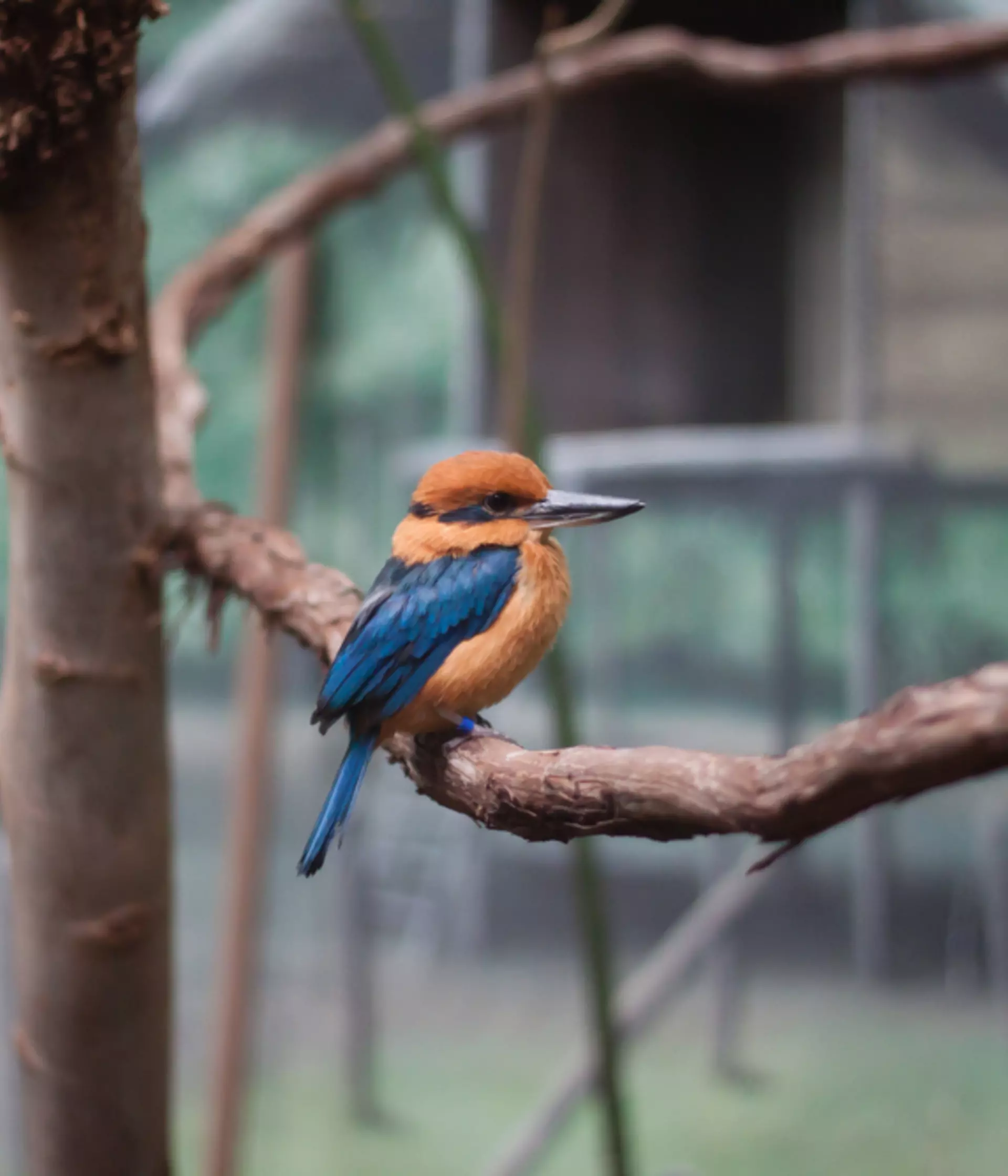Prof. John G Ewen
Professor
Matthew J Mitchell
PhD Researcher
Dr Amanda Trask
Postdoctoral Research Associate
Protecting the Guam kingfisher from invasive snakes
The sihek’s native island of Guam is only around the size of the Isle of Man but became overrun by 2 million invasive brown tree snakes. The first brown-tree snakes arrived in Guam in the 1940s on shipping containers. They were unlike any predator the native wildlife had seen before, and the impact on Guam was unprecedented. Most native bird, bat and lizard species were lost from the wild, knocking their ecosystem off balance. This has damaged all life on the island, even causing less trees to grow because there are so few birds left to disperse seeds.
Siheks were extinct in the wild for over thirty years, but through careful research we are working to restore their population. In 2024 we reintroduced siheks to their native habitat for the very first time in decades and continue to monitor their progress carefully. We are creating a new home for sihek away from Guam for now, to ultimately put us in the best place possible to return sihek to Guam in the future.
Sihek conservation
The ZSL Institute of Zoology is working together to establish a healthy, wild population of these kingfishers. From our work with hihi in New Zealand to kestrels in Mauritius, we are experts in bird reintroduction projects. Now captive breeding populations are large enough, we have dveloped a conservation translocation plan for the species.
For now Guam remains unsuitable for sihek reintroduction despite ongoing snake management efforts. We have instead created a new home on small neighbouring islands, to recover populations whilst Guam's ecosystem is restored. This means introducing sihek to sites outside of their native range, and carefully assessing the risk to these ecosystems and sihek by carrying out disease risk analysis and ecosystem modelling.
Wildlife reintroductions are notoriously difficult, so our unique insight is crucial to planning everything from the method of release, to supporting the birds transition into the wild and predicting long-term risks. The results of this project will provide more invaluable data which will be used to inform wildlife reintroduction projects globally. Helping advance the success of reintroductions for all wildlife, whether mountain chickens or greater one-horned Rhino.
Genetic threats to the sihek
The last few remaining siheks were saved from wild in the 1980’s, and without zoo conservation the species would have been lost forever. However, the small population has caused inbreeding to negatively affect the success of breeding. 29 wild sihek were captured and translocated to zoos in the US mainland before their extinction in the wild to start a captive breeding program, and today there are 135 siheks.
Due to the small numbers of individuals that were captured from the wild and which successfully bred to establish the captive population, some inbreeding is inevitable in the sihek population. Inbreeding can reduce individual’s reproductive success and survival (this is called ‘inbreeding depression’), and therefore impact a population’s viability and extinction risk.
We found that inbreeding was having a substantial impact on adult male and female lifespan as well as reproductive success, so that more inbred individuals had reduced lifespans and fewer offspring than more outbred individuals.
To determine if this put the sihek at risk of extinction, we created a model of the sihek population to simulate what might happen under different management scenarios, including taking individuals from the captive population for release to the wild.
Through this research we created a framework to continue to grow the population through increasing breeding. By determining the best route to protect the long-term health of the population, our research has ensured the population remains strong enough to support the planned reintroductions.
Protecting siheks – the Guam kingfisher
The sihek population re-establishment programme is supported by the Guam Department of Agriculture’s Division of Aquatic and Wildlife Resources (DAWR), the US Fish and Wildlife Service (USFWS) and the American Zoo and Aquarium Association’s Guam Kingfisher Species Survival Plan participating institutions.
Our impact
The development of an effective conservation translocation strategy to re-establish a wild Sihek population, the only native Guam kingfisher species.
Releases of sihek into the wild.
A healthy wild population of sihek.
A long-term species recovery programme, with continued monitoring of the established wild sihek population and the release-site ecosystem.
Partners: We work with a dedicated group of partners in sihek conservation including Guam’s Division of Aquatic and Wildlife Resources, Sedgwick County Zoo and members of the Association of Zoos and Aquariums who care for sihek, The Nature Conservancy and the US Fish & Wildlife Service.
Sponsors: Guam Department of Agriculture Division of Aquatic and Wildlife Resources (DAWR); US Fish and Wildlife Service (USFWS)
From leading field projects on tiny islands to influencing world leaders wildlife policies, we are there wherever nature needs us. Join us on our journey to restore the natural world.
